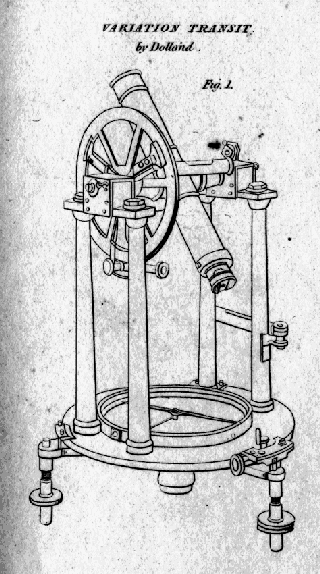Surveying
Today, we say goodbye to a technology. The University of Houston's College of Engineering presents this series about the machines that make our civilization run, and the people whose ingenuity created them.
A small outboard-motor boat leaves the east shore of Lake Klamath, 20 miles north of Klamath Falls, Oregon. In it are four of us -- all from the Oregon State Highway Department. We're laying out a new road -- route 140 -- up the west side of the lake. The other three are seasoned road surveyors. I'm a college student -- still a teenager. We begin a 45-minute ride in the clear chill of the summer morning. The old-timers play pinochle while I steer the boat across the lake.
On the west side we carry our transits, measuring chains, and machetes up into the undergrowth on the large hill that rises out of the lake. Our equipment is a lot like the equipment George Washington used when he was my age.
The day grows hot. We curse the brush, and we curse the surveyor who set the benchmarks we're trying to locate. We're probably the first humans to walk this remote ground since a government surveyor placed those markers in the 1870s. Some of them are 50 feet out of place -- some we never find. Our predecessor obviously worked rapidly and without great care. Yet our boss insists we turn over every stick before we give up on any marker. He's a rough, sun-beaten man, but he has an historical sense of what he's doing. However badly those markers were placed, that surveyor is part of the fraternity. If we can possibly find his benchmarks, we'll do it.
By summer's end, we've tied the roadbed to official markers and staked it out, straight as an arrow, 14 miles into the endless flat forest above Lake Klamath. I go back to school -- to think about other things. Only years later do I return to the site of those Sisyphean labors, to whiz down that arrow-straight road I once helped build.
Surveying had the flavor of trail-blazing when I was young. It meant going where other people did not go and doing something important. It was dirty, hard, and yet romantic work.
Surveying is a form of information management. Surveyors answer the questions "Where?" and "How far?" They locate things. And we're living in the middle of an information revolution. Surveying, like every technology that deals in information, is being changed beyond recognition. Today, instruments can triangulate from satellites and locate any point on the planet, in three dimensions, to within millimeters. Today the instruments we used on the west slope of Lake Klamath are being made to look like relics from the stone age. I can look at other technological change with equanimity, but today's surveying techniques make me feel old. Today's surveyors make me feel so very old.
I'm John Lienhard, at the University of Houston, where we're interested in the way inventive minds work.
(Theme music)

(From the 1832 Edinburgh Encyclopaedia)
An early 19th century surveyor's transit